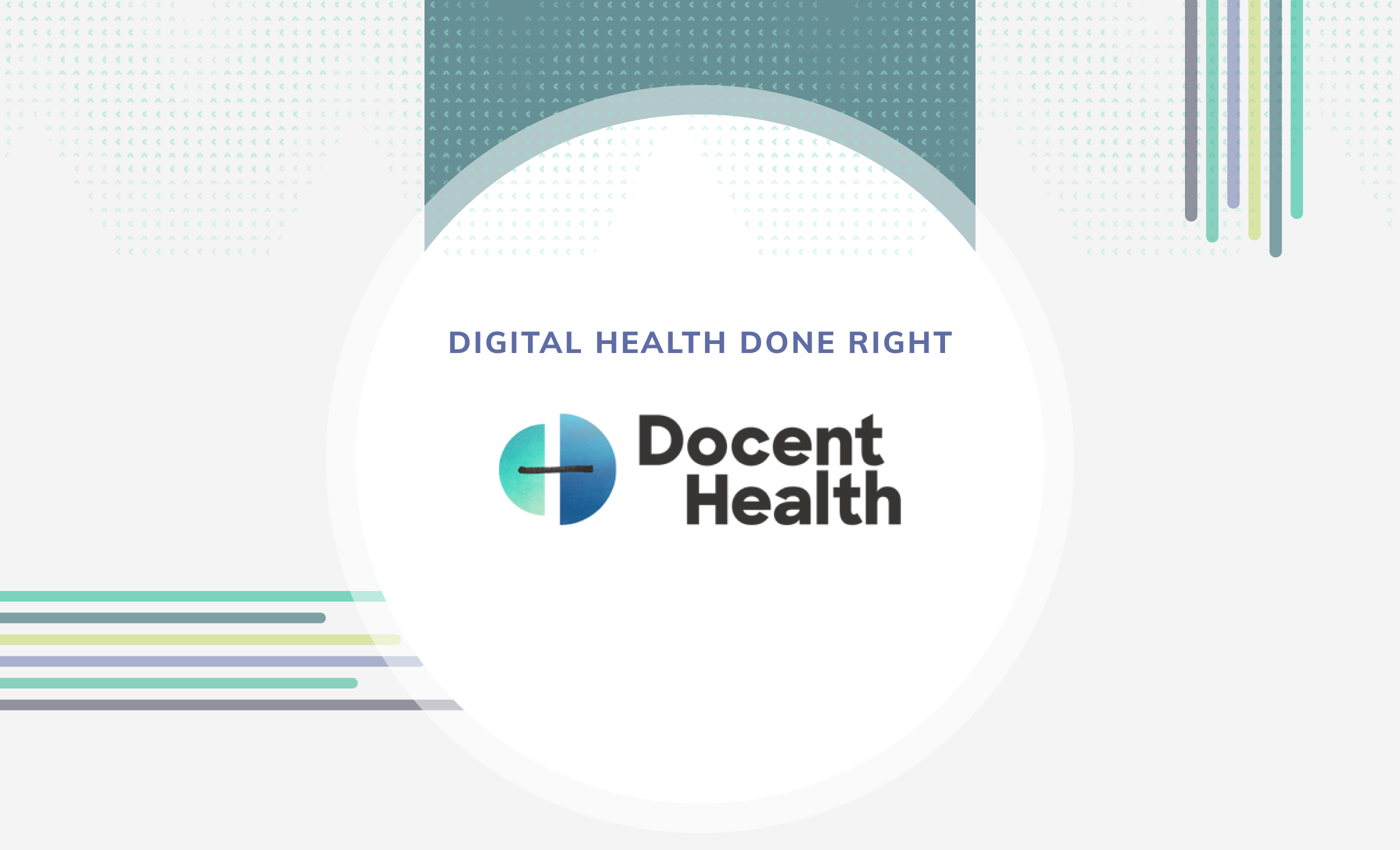Digital Health Done Right: Docent Health
May 09, 2017

Digital Health Done Right is a Redox Blog Series that shines a light on a member of our interoperable network. We believe in what our partners are doing and want to share their stories and outcomes with you.
The benefits of any new technology always come at a cost. Sometimes, they're clearly known or predicted; other times, the costs are unforeseen and can be difficult to address.
With the implementation of electronic health records, it was a little bit of both. While hard to precisely quantify, people were aware that gaining efficiencies in how medical professionals document care could result in a loss of connectivity with patients. The extent of this loss, however, was more than people could have predicted.
Recapturing the human element of treatment
One of the biggest costs of EHR adoption has been the alarming increase in physician burnout. With increasing pressure to be more and more efficient, care providers churn outpatient visits purely to meet quotas and satisfy review boards. While seeing more people does increase revenue, it ultimately results in fewer patients being heard and understood on a personal level.
The problem is that as patients begin to be processed at a higher rate, things have tipped too far into digitization and patients have begun to all look the same. This has left people wondering how we can rectify the situation and go back to meaningfully treating patients as human beings. More succinctly, how do you truly account for all their expectations, fears, and hopes when a system is overhauled to prioritize efficiency above all else?
Unhappy with the impersonal state of medical care, the founders of Docent set out to answer this is question. What they created is a solution that elevates patient engagement platforms to new levels to recapture the human element of treatment, that “personal side of the manila folder” where doctors would write down details and notes about patients during visits.
Built out by an actual human acting as a patient liaison (called a Docent), the program functions as a more cohesive and thorough extension of a patient’s medical record that takes into account everything medical records don't—thoughts, feelings, positive past medical experiences, negative past medical experiences, apprehensions about care, etc. Each Docent speaks directly to patients enrolled in their program to gain a deeper understanding about what they’re seeking treatment for, how they expect the journey to go, and what reservations they have surrounding their care. Docents use these nuanced answers to build a personal care journey that’s complementary to clinical care, resulting in a patient experience that is more fulfilling, rewarding, and satisfying for everyone involved.
Same diagnosis, different experience
An excellent example of this workflow at play is in prenatal care. Take, for instance, a panel of ten expectant mothers who are coming in to a health system to give birth. If you evaluate them on their medical records alone, they're pretty much indistinguishable and will likely follow a similar care journey. However, if you ask each mother about how they’re feeling about the forthcoming process, what their expectations are, and what they’re nervous about, you’ll likely receive ten wildly different answers—one may be deeply anxious about the epidural, one could be clinging to hope that her premature baby is healthy, and another preoccupied with enduring a painful labor. There are specialized care paths each could go down to better attend to their unique perspectives, but without asking for and knowing those feelings, it’s impossible to deliver better care.
How people feel truly influences how they receive care, and Docent believes that taking patient's feelings into account is the most important piece of the puzzle that’s gone missing since the adoption of electronic health records. Rehabilitating the connection between patients and providers is how we restore the human side of treatment, and luckily, this approach doesn’t just help patients—it benefits health systems, too.
Big data at an Iidividual level
Taking again the example of the expectant mothers, if eight hundred out of one thousand women surveyed express anxiety or concern around anesthesia, health systems could build in protocols to more adequately address those fears in routine preliminary care. Expectant mothers then have their worries assuaged before ever expressing them, leading to an improved patient experience and higher visit satisfaction.
This type of population data is both new and extremely valuable to health systems, as it allows them to view their patients not as parts moving through an assembly line, but as people being seen and heard individually throughout their system. These types of insights are particularly beneficial to health systems seeking to grow their customer base, as high customer satisfaction is a key reason people come back and continue receiving care at a particular system.
The best part about Docent is that it can be applied across the board—any workflow for any ailment is full of patients waiting to be heard and understood in a more meaningful way. It just takes some thought, care, and a Docent who's willing to listen.
Docent is on a mission to make patients people again, and we’re truly proud to have them in our network.
